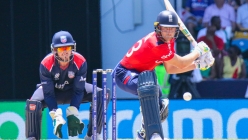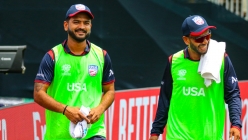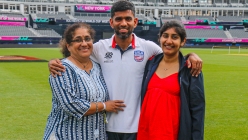In Sri Lanka differentiation takes a new meaning
2009 Aug 31 by Suresh Menon
Sri Lanka have reason to celebrate. They are the second best cricket team in the world, and home to some of the most creative and original players in the modern game. As the game moves towards a depressing homogenization, thanks to globalization and access to the methods and formulae of rivals, it is the unusual that stands out, and Sri Lanka have the double joy of having their unusual players being successful as well.
Sri Lanka have reason to celebrate. They are the second best cricket team in the world, and home to some of the most creative and original players in the modern game. As the game moves towards a depressing homogenization, thanks to globalization and access to the methods and formulae of rivals, it is the unusual that stands out, and Sri Lanka have the double joy of having their unusual players being successful as well.
Sri Lanka’s coaches are clearly a breed apart. It is difficult to see the likes of Mutthiah Muralitharan, Sanat Jayasuriya, Ajantha Mendis, Lasith Malinga and those uniquely gifted like them emerging from the coaching schools and national academies of other countries. Coaches try to mould wards in their own image or in the image of accepted textbook icons. When Mike Brearley wrote that a cricket team succeeds by the dint of differentiation, he meant that in a team of eleven, the bowlers, the batsmen, the wicketkeeper have distinctive roles, unlike say a team of rowers most of whom have identical roles.
But in Sri Lanka ‘differentiation’ takes on a new meaning – how different are their spinners from craftsmen from around the world!
In just two generations since Sri Lanka made their Test debut, they are No. 2 in the world – ahead of Australia, England, India and the West Indies. The victories over Pakistan and New Zealand were both authoritative and inevitable. The two boyhood friends, Mahela Jayawardene and Kumara Sangakkara, have led the recent sides well, continuing the ‘self-respect’ movement that originated with Arjuna Ranatunga when he held aloft the World Cup in 1996. Each averages over 55 per innings in a career that has already seen them make 15,000 Test runs together. Both turn 32 this year, so there’s plenty more to come from two of the finest batsmen in the game today.
If Muralitharan is in the twilight of a great career, he has played a vital role in injecting self-confidence into a team that began its international career only in 1982.
And now comes the difficult part. Breaking through to Number 1. South Africa are perched there as if by right, and a glance through the records shows that Sri Lanka have to work on their away record before they can be considered the best team both statistically and psychologically.
Of their 18 victories abroad, seven have come in Bangladesh and Zimbabwe, six in Pakistan, two each in England and New Zealand and one in the West Indies. No wins in India, Australia, South Africa, although they have victories against all of them among their 42 at home. This is the lopsidedness that Sri Lanka will have to correct if they have to evolve from an exciting team capable of giving the big teams a run for their money into a well-rounded outfit which approach every game on at least level terms with the opposition. It is no compliment to be known as unbeatables at home if the flip side of that is “innocents abroad”. It took their neighbours India years to live down their image as tigers at home, lambs abroad.
In Sangakkara, Sri Lanka are fortunate to have as captain at this crucial juncture a man who is hard as nails and combines charm and toughness in rare measure. Both behind and in front of the stumps he is an inspirational figure, a Ranatunga without the rough edges, a Jayawardene without the gentleness.
The temperament needed to raise a team’s level of performance is different from that needed to ensure that it stays at that level for a while. And Sri Lanka seem to have got that mix right.




